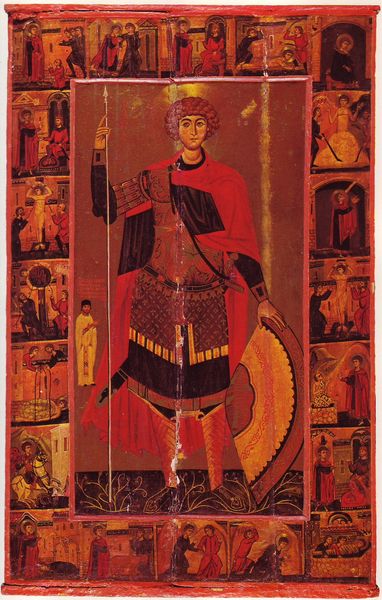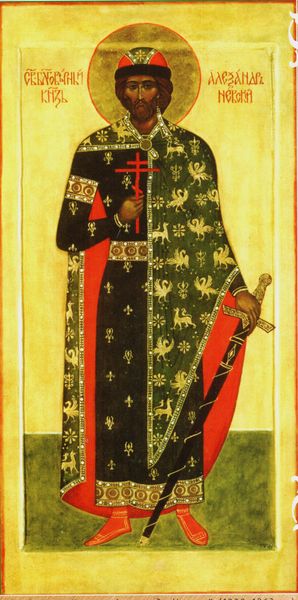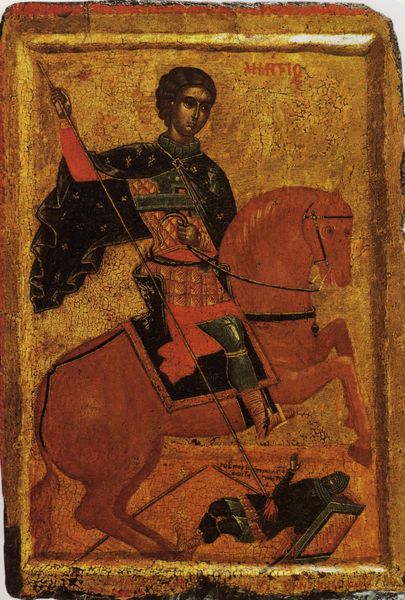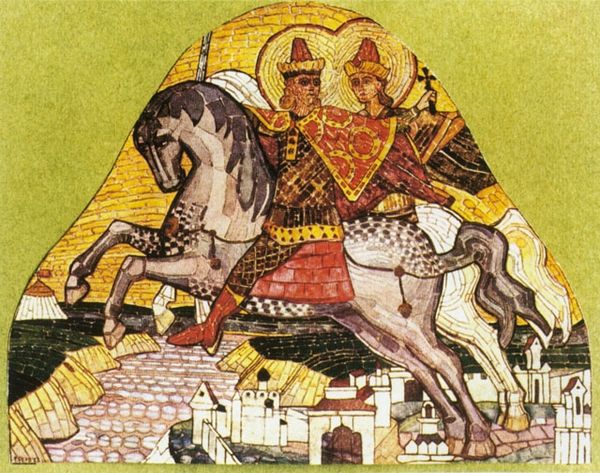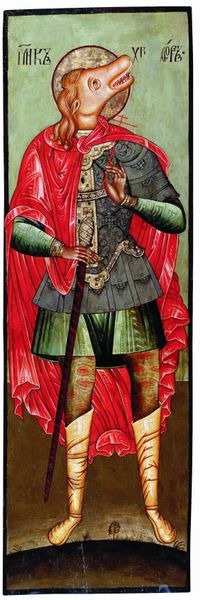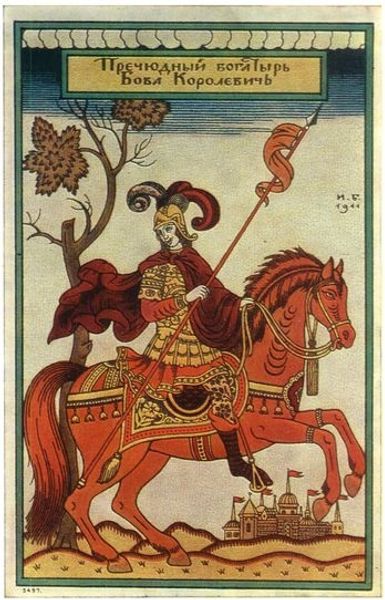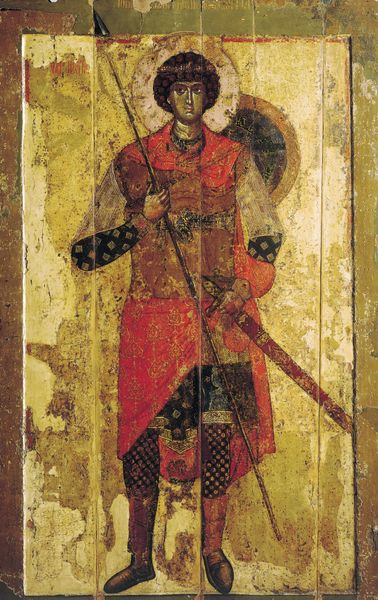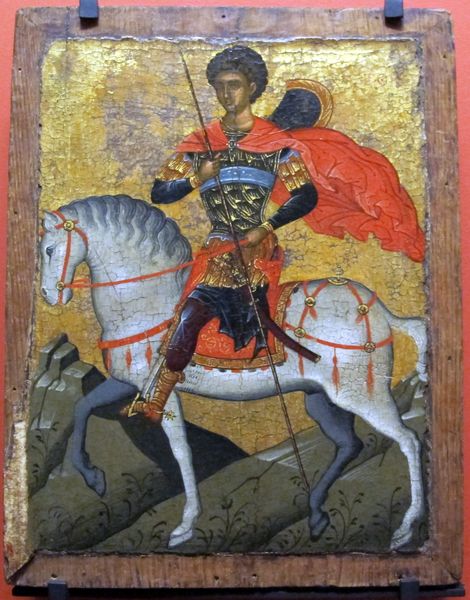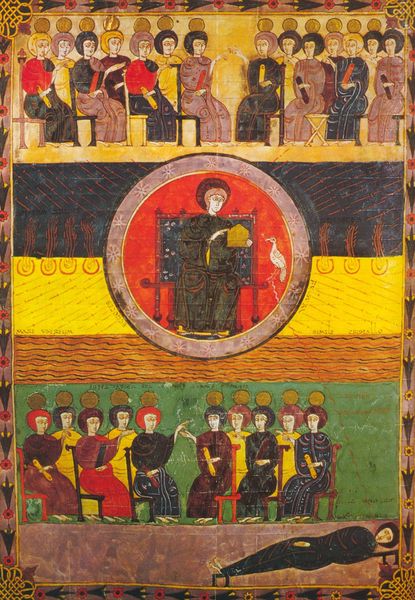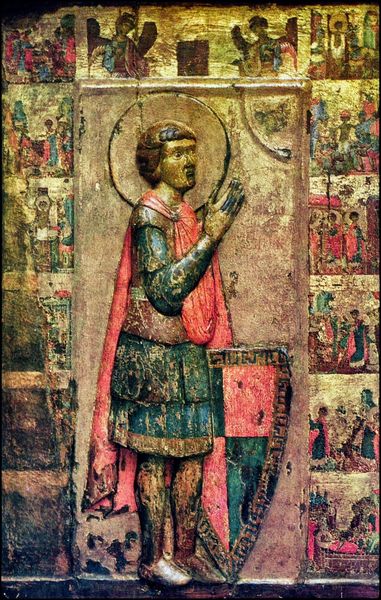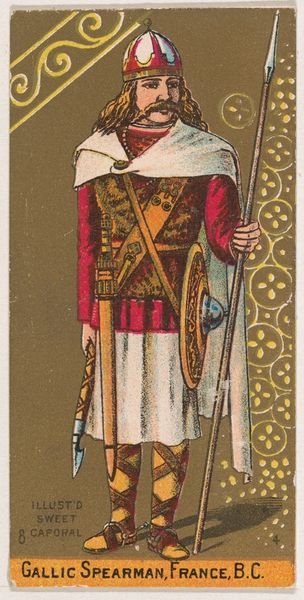
Saint Sergius. Master of the Knights Templar 1325
0:00
0:00
orthodoxicons
Saint Catherine's Monastery, Mount Sinai, Egypt
tempera, painting
#
portrait
#
byzantine-art
#
medieval
#
narrative-art
#
tempera
#
painting
#
figuration
#
painting art
#
history-painting
#
miniature
Copyright: Orthodox Icons,Fair Use
Curator: This tempera painting, created around 1325, depicts "Saint Sergius. Master of the Knights Templar," and resides at Saint Catherine's Monastery in Egypt. It offers a fascinating glimpse into Byzantine artistic conventions. Editor: My first impression is of layered space, but it feels compressed, like a tapestry. The colors are intense, verging on jewel-like, with gold accents catching the light. Curator: Note the symbolic import woven into the materials themselves. The egg tempera, made with pigments sourced globally and painstakingly applied, represents not only value but the divine spirit inherent in the act of creation, reflecting monastic labor practices. Editor: I’m drawn to the balance—how the saint's figure and the horse mirror each other's forms. Look at the repetition of the curved lines, particularly within the saddle area that seem to be containing the woman leaning over in grief at the bottom. Also the bold cross featured so prominently. This formal emphasis seems designed to convey stillness. Curator: Context is essential here. This icon would have been part of a larger devotional program within the monastery, an institution reliant on trade and patronage networks stretching across empires, which explains why the artist’s position would have depended on multiple hierarchies that would contribute to the overall aesthetic outcome of the artwork. Editor: Agreed. However, within this frame, one notices how the figure dominates, conveying not earthly but rather ethereal strength, underscored by how the colors serve this by being visually dense, compacting the figures further. Curator: It is precisely through this devotional purpose and production that an artisan manifests their spiritual convictions through repetitive craftsmanship. It's work meant to evoke reflection among those in a monastic life devoted to spiritual work and repetitive routines. Editor: For me, it speaks to an interest in timelessness; the way forms seem fixed, and every figure is both there and not-there at the same time; more of a symbol than real figure. I wonder if this had a conscious attempt to point viewers back toward faith. Curator: By appreciating its materials and how it was made to meet religious guidelines in its cultural moment we discover its importance as an artistic commodity used within religious, trading economies that continue to reverberate into our understanding today. Editor: It’s remarkable how even across vast temporal distances and artistic difference, the formal structure of the elements holds together the underlying meaning for viewers to witness and engage with to this very day.
Comments
No comments
Be the first to comment and join the conversation on the ultimate creative platform.
